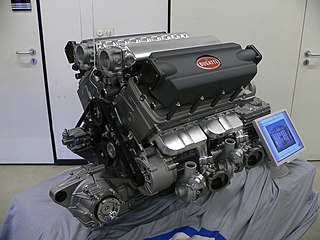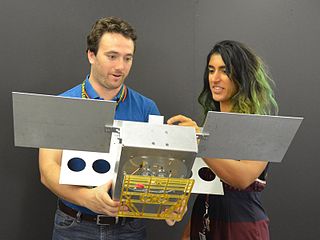The philosophy of engineering is an emerging discipline that considers what engineering is, what engineers do, and how their work affects society, and thus includes aspects of ethics and aesthetics, as well as the ontology, epistemology, etc. that might be studied in, for example, the philosophy of science or the philosophy of technology.
Engineering is the profession aimed at modifying the natural environment, through the design, manufacture and maintenance of artifacts and technological systems. It might then be contrasted with science, the aim of which is to understand nature. Engineering at its core is about causing change, and therefore management of change is central to engineering practice. The philosophy of engineering is then the consideration of philosophical issues as they apply to engineering. Such issues might include the objectivity of experiments, the ethics of engineering activity in the workplace and in society, the aesthetics of engineered artifacts, etc.
While engineering seems historically to have meant devising, the distinction between art, craft and technology isn't clearcut. The Latin root ars, the Germanic root kraft and the Greek root techne all originally meant the skill or ability to produce something, as opposed to, say, athletic ability. The something might be tangible, like a sculpture or a building, or less tangible, like a work of literature. Nowadays, art is commonly applied to the visual, performing or literary fields, especially the so-called fine arts ('the art of writing'), craft usually applies to the manual skill involved in the manufacture of an object, whether embroidery or aircraft ('the craft of typesetting') and technology tends to mean the products and processes currently used in an industry ('the technology of printing'). In contrast, engineering is the activity of effecting change through the design and manufacture of artifacts ('the engineering of print technology').
What distinguishes engineering design from artistic design is the requirement for the engineer to make quantitative predictions of the behavior and effect of the artifact prior to its manufacture. Such predictions may be more or less accurate but usually includes the effects on individuals and/or society. In this sense, engineering can be considered a social as well a technological discipline and judged not just by whether its artifacts work, in a narrow sense, but also by how they influence and serve social values. What engineers do is subject to moral evaluation. [1]
Socio-technical systems, such as transport, utilities and their related infrastructures comprise human elements as well as artifacts. Traditional mathematical and physical modeling techniques may not take adequate account of the effects of engineering on people, and culture. [1] [2] The Civil Engineering discipline makes elaborate attempts to ensure that a structure meets its specifications and other requirements prior to its actual construction. The methods employed are well known as Analysis and Design. Systems Modelling and Description [3] makes an effort to extract the generic unstated principles behind the engineering approach.
The traditional engineering disciplines seem discrete but the engineering of artifacts has implications that extend beyond such disciplines into areas that might include psychology, finance and sociology. The design of any artifact will then take account of the conditions under which it will be manufactured, the conditions under which it will be used, and the conditions under which it will be disposed. Engineers can consider such "life cycle" issues without losing the precision and rigor necessary to design functional systems. [1]

Civil engineering is a professional engineering discipline that deals with the design, construction, and maintenance of the physical and naturally built environment, including public works such as roads, bridges, canals, dams, airports, sewage systems, pipelines, structural components of buildings, and railways.

Engineering is the practice of using natural science, mathematics, and the engineering design process to solve problems, increase efficiency and productivity, and improve systems. Modern engineering comprises many subfields which include designing and creating infrastructure, machinery, vehicles, electronics, materials, and energy.

Electrical engineering is an engineering discipline concerned with the study, design, and application of equipment, devices, and systems which use electricity, electronics, and electromagnetism. It emerged as an identifiable occupation in the latter half of the 19th century after the commercialization of the electric telegraph, the telephone, and electrical power generation, distribution, and use.

Mechanical engineering is the study of physical machines that may involve force and movement. It is an engineering branch that combines engineering physics and mathematics principles with materials science, to design, analyze, manufacture, and maintain mechanical systems. It is one of the oldest and broadest of the engineering branches.

Systems engineering is an interdisciplinary field of engineering and engineering management that focuses on how to design, integrate, and manage complex systems over their life cycles. At its core, systems engineering utilizes systems thinking principles to organize this body of knowledge. The individual outcome of such efforts, an engineered system, can be defined as a combination of components that work in synergy to collectively perform a useful function.

Technology is the application of knowledge for achieving practical goals in a reproducible way. The word technology can also mean the products resulting from such efforts, including both tangible tools such as utensils or machines, and intangible ones such as software. Technology plays a critical role in science, engineering, and everyday life.

Engineers, as practitioners of engineering, are professionals who invent, design, analyze, build and test machines, complex systems, structures, gadgets and materials to fulfill functional objectives and requirements while considering the limitations imposed by practicality, regulation, safety and cost. The word engineer is derived from the Latin words ingeniare and ingenium ("cleverness"). The foundational qualifications of a licensed professional engineer typically include a four-year bachelor's degree in an engineering discipline, or in some jurisdictions, a master's degree in an engineering discipline plus four to six years of peer-reviewed professional practice and passage of engineering board examinations.

The Iron Ring is a ring worn by many Canadian-trained engineers, as a symbol and reminder of the obligations and ethics associated with their profession. The ring is presented to engineering graduates in a private ceremony known as the Ritual of the Calling of an Engineer. The concept of the ritual and the rings originated from H. E. T. Haultain in 1922, with assistance from Rudyard Kipling, who crafted the ritual at Haultain's request.
The ethics of technology is a sub-field of ethics addressing the ethical questions specific to the Technology Age, the transitional shift in society wherein personal computers and subsequent devices provide for the quick and easy transfer of information. Technology ethics is the application of ethical thinking to the growing concerns of technology as new technologies continue to rise in prominence.

Henry Petroski was an American engineer specializing in failure analysis. A professor both of civil engineering and history at Duke University, he was also a prolific author. Petroski has written over a dozen books – beginning with To Engineer is Human: The Role of Failure in Successful Design (1985) and including a number of titles detailing the industrial design history of common, everyday objects, such as pencils, paper clips, toothpicks, and silverware. His first book was made into the film When Engineering Fails. He was a frequent lecturer and a columnist for the magazines American Scientist and Prism.
Earth systems engineering and management (ESEM) is a discipline used to analyze, design, engineer and manage complex environmental systems. It entails a wide range of subject areas including anthropology, engineering, environmental science, ethics and philosophy. At its core, ESEM looks to "rationally design and manage coupled human–natural systems in a highly integrated and ethical fashion". ESEM is a newly emerging area of study that has taken root at the University of Virginia, Cornell and other universities throughout the United States, and at the Centre for Earth Systems Engineering Research (CESER) at Newcastle University in the United Kingdom. Founders of the discipline are Braden Allenby and Michael Gorman.
Engineering ethics is the field of system of moral principles that apply to the practice of engineering. The field examines and sets the obligations by engineers to society, to their clients, and to the profession. As a scholarly discipline, it is closely related to subjects such as the philosophy of science, the philosophy of engineering, and the ethics of technology.

Packaging engineering, also package engineering, packaging technology and packaging science, is a broad topic ranging from design conceptualization to product placement. All steps along the manufacturing process, and more, must be taken into account in the design of the package for any given product. Package engineering is an interdisciplinary field integrating science, engineering, technology and management to protect and identify products for distribution, storage, sale, and use. It encompasses the process of design, evaluation, and production of packages. It is a system integral to the value chain that impacts product quality, user satisfaction, distribution efficiencies, and safety. Package engineering includes industry-specific aspects of industrial engineering, marketing, materials science, industrial design and logistics. Packaging engineers must interact with research and development, manufacturing, marketing, graphic design, regulatory, purchasing, planning and so on. The package must sell and protect the product, while maintaining an efficient, cost-effective process cycle.

Carl Mitcham is a philosopher of engineering and technology, Professor Emeritus of Humanities, Arts, and Social Sciences at the Colorado School of Mines and Visiting International Professor of Philosophy of Technology at Renmin University of China.

So Human an Animal: How We Are Shaped by Surroundings and Events, is a book written by René Dubos and published by Scribner in 1968. It won the 1969 Pulitzer Prize for General Non-Fiction.
In philosophy and sociology, a biofact is a being that is both an artifact and living being, or both natural and artificial. This being has been created by purposive human action but exists by processes of growth. The word is a neologism coined from the combination of the words bios and artifact.

Industrial engineering is an engineering profession that is concerned with the optimization of complex processes, systems, or organizations by developing, improving and implementing integrated systems of people, money, knowledge, information and equipment. Industrial engineering is central to manufacturing operations.
Günter Ropohl was a German philosopher of technology.
Jeroen van den Hoven is a Dutch ethicist and a philosophy professor at Delft University of Technology. He specializes in ethics of information technology.

Samuel C. Florman is an American civil engineer, general contractor and author. He is best known for his writings and speeches about engineering, technology and the general culture. The most widely distributed of his seven books is The Existential Pleasures of Engineering, published in 1976, second edition in 1994. According to one authority, "It has become an often-referred-to modern classic." His most recently published book is Good Guys, Wiseguys and Putting Up Buildings: A Life in Construction, published in 2012.